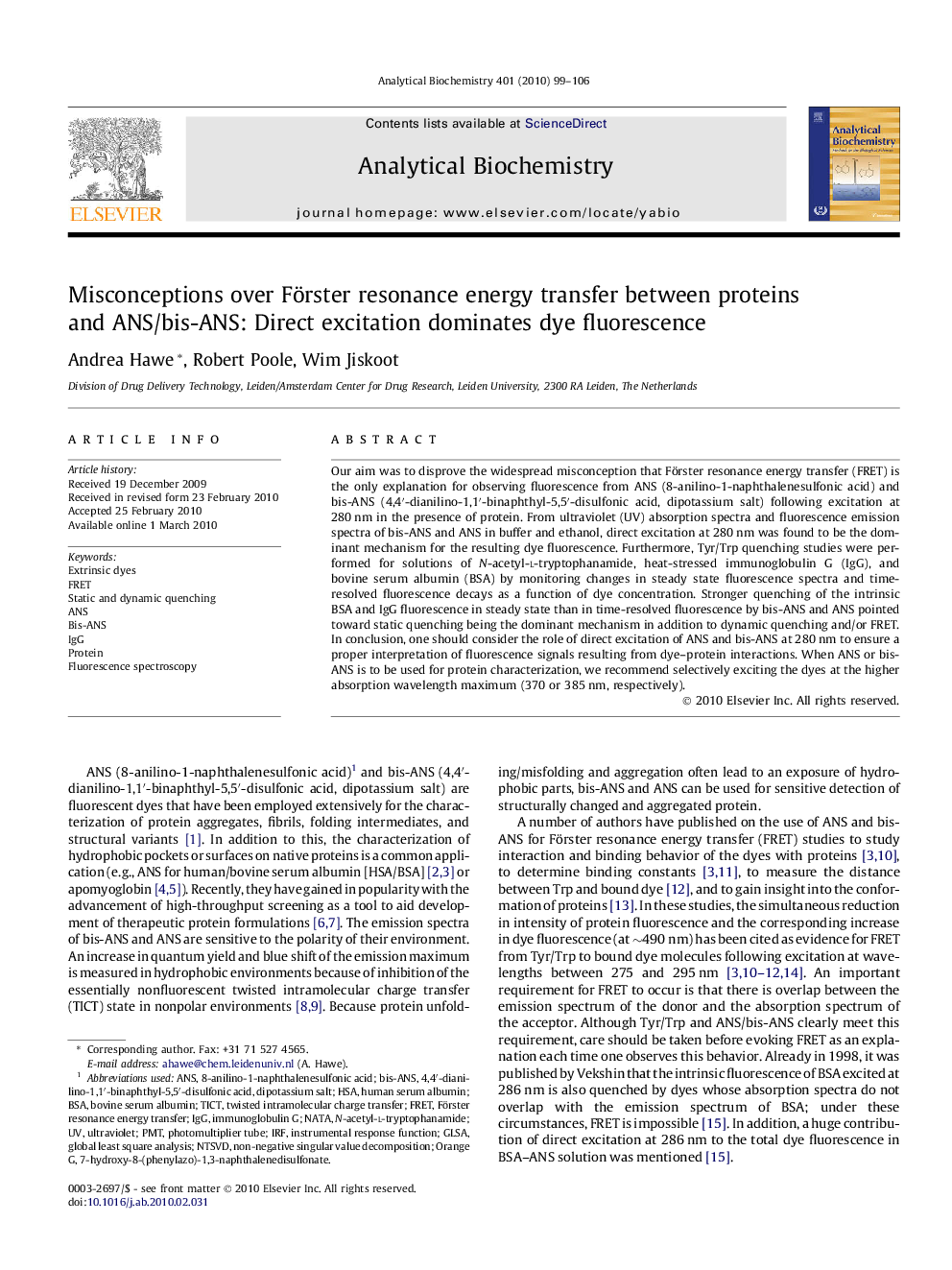| کد مقاله | کد نشریه | سال انتشار | مقاله انگلیسی | نسخه تمام متن |
|---|---|---|---|---|
| 1174990 | 961782 | 2010 | 8 صفحه PDF | دانلود رایگان |

Our aim was to disprove the widespread misconception that Förster resonance energy transfer (FRET) is the only explanation for observing fluorescence from ANS (8-anilino-1-naphthalenesulfonic acid) and bis-ANS (4,4′-dianilino-1,1′-binaphthyl-5,5′-disulfonic acid, dipotassium salt) following excitation at 280 nm in the presence of protein. From ultraviolet (UV) absorption spectra and fluorescence emission spectra of bis-ANS and ANS in buffer and ethanol, direct excitation at 280 nm was found to be the dominant mechanism for the resulting dye fluorescence. Furthermore, Tyr/Trp quenching studies were performed for solutions of N-acetyl-l-tryptophanamide, heat-stressed immunoglobulin G (IgG), and bovine serum albumin (BSA) by monitoring changes in steady state fluorescence spectra and time-resolved fluorescence decays as a function of dye concentration. Stronger quenching of the intrinsic BSA and IgG fluorescence in steady state than in time-resolved fluorescence by bis-ANS and ANS pointed toward static quenching being the dominant mechanism in addition to dynamic quenching and/or FRET. In conclusion, one should consider the role of direct excitation of ANS and bis-ANS at 280 nm to ensure a proper interpretation of fluorescence signals resulting from dye–protein interactions. When ANS or bis-ANS is to be used for protein characterization, we recommend selectively exciting the dyes at the higher absorption wavelength maximum (370 or 385 nm, respectively).
Journal: Analytical Biochemistry - Volume 401, Issue 1, 1 June 2010, Pages 99–106